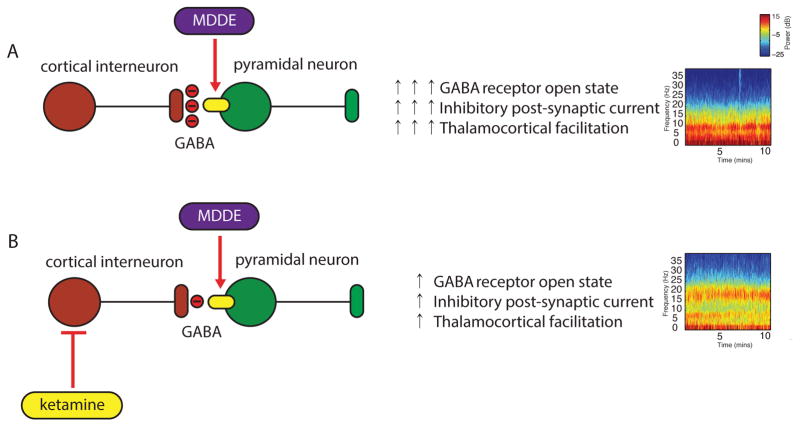Figure 7.
A schematic of how MDDE and MDDE/ketamine may alter neuronal function to induce unconsciousness. (A) Interneurons release GABA to inhibit pyramidal neurons. Pyramidal neurons contain glutamate and act on other pyramidal neurons (not shown) or interneurons (not shown) to excite them through activation of NMDA and non-NMDAr. MDDE at clinical concentrations and in the presence of GABA enhance the amplitude of responses to GABA and prolong the duration of GABA mediated synaptic inhibition. This is manifest on the electroencephalogram as slow oscillations, theta and coherent frontal alpha oscillations. Subcortical mechanisms (not shown) are likely important for the generation and maintenance of these oscillations. (B) Ketamine antagonizes NMDAr on inhibitory interneurons more effectively than those on pyramidal cells. This leads to reduced inhibitory tone, possible interneuron asynchrony, and less effective ability of MDDE to maintain slow oscillations and coherent alpha oscillations. This depiction is meant solely for illustrative purposes and does not represent all the network ensembles that may be essential for these oscillations.
MDDE, modern day derivatives of ether; NMDAr, N-methyl-D-aspartate receptors.

